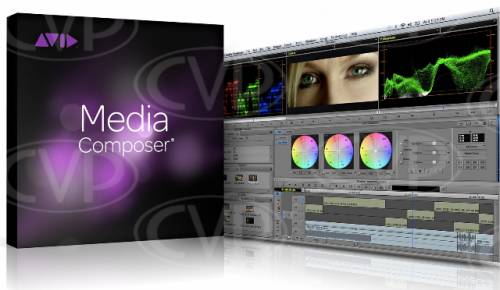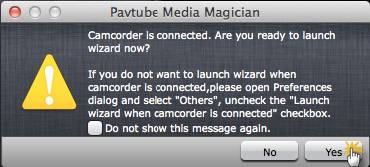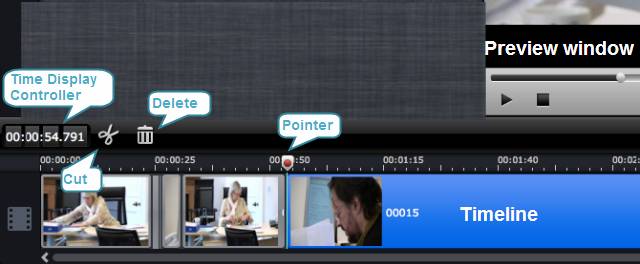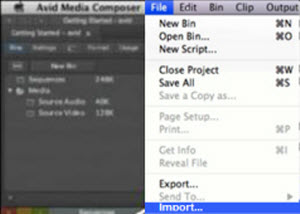Both amateur video editing lovers and professional videographers often encounter troubles while loading MTS clips from an AVCHD camera/camcorder into Avid Media Composers for further editing. The solution to this kind of problem would be transcoding MTS footage to DNxHD MOV - the best suited format for working with Avid Studio. More than changing AVCHD files from MTS format to DNxHD MOV format, in the meantime, people usually have the needs to optimize video and audio settings of the output files so as to expect their required file quality. The tutorial below will display how to optimized output settings when changing MTS to DNxHD MOV for Avid Media Composer by using an HDcam assistant tool called Pavtube Media Magician for Mac.

Why choose Pavtube Media Magician for Mac?
It is able to do more than a regular MTS Converter for Mac:
- Importing directly from camera/camcorder or backup camcorder videos to local HDD.
- Timeline editing, helping you edit camera clips in an easy and accurate way.
- Frame by Frame editing, helping you trim, cut and delete unwanted parts accurately.
- Adding 3D and other special effects to clips on timeline.
- Output Apple ProRes MOV for editing in Final Cut Pro (X) without rendering.
- Featuring optimal presets for iMovie, FCE, Avid Studio, Adobe Premiere, Sony Vegas, Adobe After Effects, and Apple Aperture.
* Exporting files best suited for playing on Android devices, Windows devices, iPad, iPhone, Apple TV, HD Player, PSP/PS3, and HDV.
* Transcoding camera videos to a wide range of file formats, including AVI, MPEG-2, WMV, MOV, MKV, MPEG-4, and M2TS.
* Lossless output - keeping original format of source media, and rewrapping source video to MKV container without quality loss.
* Directly upload camera videos onto YouTube by using your already-have YouTube account.
How to perform the optimization of output settings when changing MTS to DNxHD for Avid?
Step 1: ![]() Free download Media Magician for Mac Trial Version, install and launch it
Free download Media Magician for Mac Trial Version, install and launch it
Note: The free trial version of Pavtube Media Magician for Mac has the following limitations:
1. It will add Pavtube logo watermark in output file(s).
2. Lossless output has a file size limit of 5 minutes.
If the free trial version does what you want, you can click Buy Now to purchase its full version to bypass the above mentioned free trial limitations.
Step 2: Add AVCHD MTS files into Media Magician for Mac
There are two ways available to import source media files:
1) Import from camera/camcorder
Connect your camera with your Mac computer and run Pavtube Media Magician for Mac. This camcorder companion tool will detect your camera automatically and ask “Camcorder is connected. Are you ready to launch wizard now?” Click “Yes” to confirm.

In the mean time, you are allowed to backup MTS footage directly from camera to local computer. Also, you can click the camera icon to load camcorder videos as well.

2) Import from local computer
If you already have stored MTS clips on your computer’s HDD, you can choose to “Import Media Files” or “Import Media Folder” to browse and load your source files from computer.
Step 3: Drag and drop MTS files onto Timeline
After source MTS clips are imported into the Media Magician for Mac program, you need to drag and drop the clips that you want to transcode to DNxHD MOV onto timeline.
If you would like to cut off unwanted parts of your MTS clips, rearrange them in your wanted order, or merge them into one file, you can use the control buttons on timeline to do this.
The control buttons on timeline help you locate frames accurately so that you can cut, trim, delete, and merge video clips in a much easier way.

Control buttons on Timeline
1. Time Display Controller: Move your mouse cursor on timeline, the opposite time point will be displayed here. Once you entered a time point into the time display box and click enter, the Preview Window and Timeline will switch to the frame of this time point. This helps to locate to the accurate frame that you want.
2. Zoom in and Zoom out: Drag the bar on top-right of timeline to Zoom in or out for better view.
3. Preview: Highlight a clip on timeline and click Play button, you can preview. Double click on a clip can also begin preview.
4. Trim: Put your cursor to the start or end point of a clip on timeline until it changes to trimmer. Drag the trimmer and you can trim off unwanted starting or ending.
5. Cut: Drag the pointer to the right place; Put your cursor to process bar under preview window and select the right frame; Click the Scissors button and you can cut the clip. And then you can rearrange order or delete.
6. Delete: Highlight the unwanted clip on timeline, and click Delete button. You can also delete it with right-click menu.
7. Rearrange order: Drag and hold a clip to the right place until the place line shows. Drop the clip and it will be placed right there.
8. Merge and join: All files placed on timeline will be output as one file. So if you want to merge and join several clips, just drag them to timeline in right order.
Step 4: Convert MTS to DNxHD MOV for Avid Media Composer
Choose “Output” in the main interface, and click “Plus” icon to add conversion task before selecting output format. Then switch to “Editor” > “Avid Studio” and click “Start” to begin exporting MTS to DNxHD MOV for Avid Media Composer.
You are allowed to custom/optimize video and audio settings before start converting. The video and audio parameters displayed below are all adjustable, including codec, resolution, bit rate, frame rate, sample rate and audio channels.

This HDcam assistant software will specify a default folder to save the converted videos. If you’d like to change the output location (output path), please click ![]() to navigate to the folder you’d like to save videos to.
to navigate to the folder you’d like to save videos to.
When conversion task finished, you can right click on the task list and check “Find Target” to get the exported DNxHD MOV files for using within Avid Media Composer.
Launch Avid Media Composer, choose File > Import…, and browse to where you saved the generated DNxHD MOV files to. Choose the videos that you’d like to add.

Useful Tips
- MXF to Avid Converter allows You to Convert 1080p HD MXF for Avid Editing
- Transcode Panasonic AVCHD MTS to Avid Media Composer DNxHD MOV
- Sony VG900/VG30 MTS and Avid workflow - edit NEX 50p/60p AVCHD with Avid MC
- Convert Sony AVCHD MTS/M2TS clips to DNxHD MOV for Avid Media Composer
- How to get Avid Media Composer working with AVCHD MTS footage?
- Transcode Panasonic Lumix DMC-FX75 AVCHD Lite MTS to Avid, Premiere, Sony Vegas, Pinnacle


 Home
Home Free Trial Media Magician for Mac
Free Trial Media Magician for Mac





